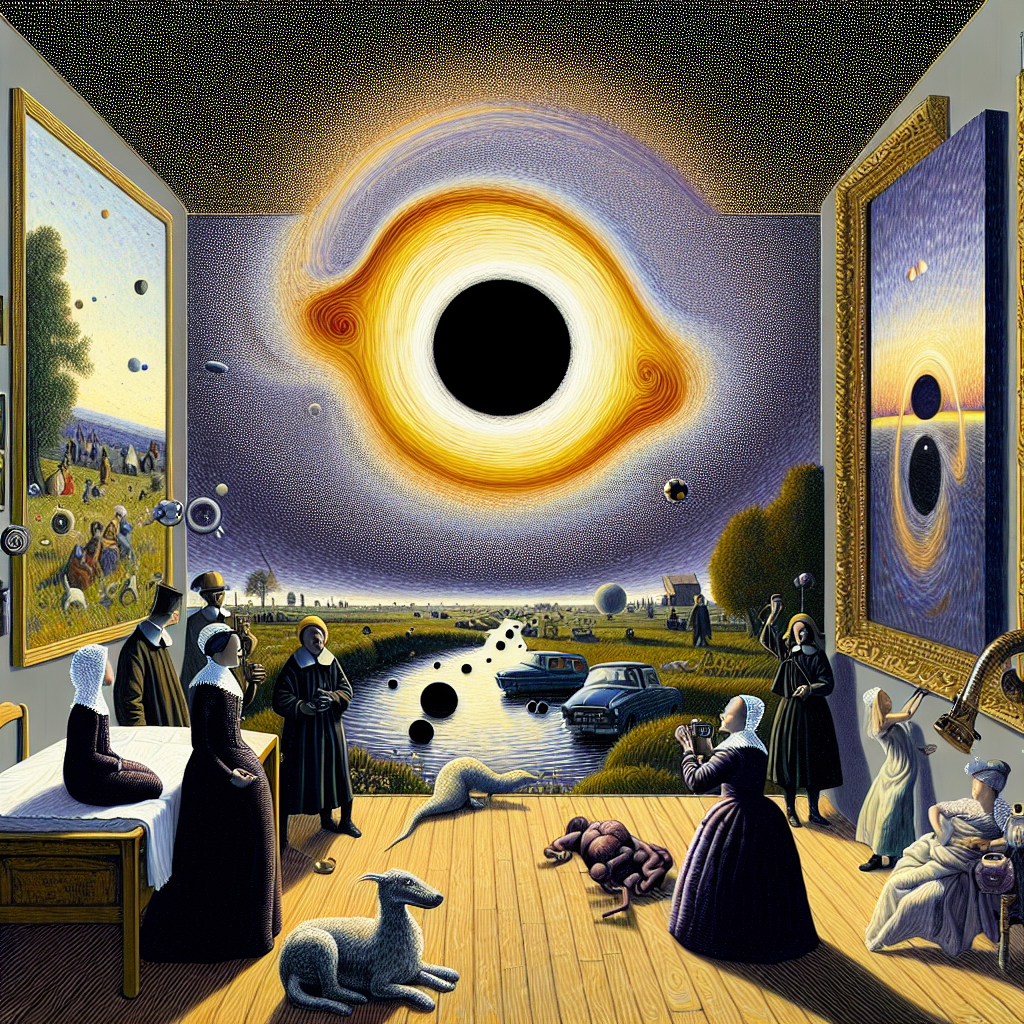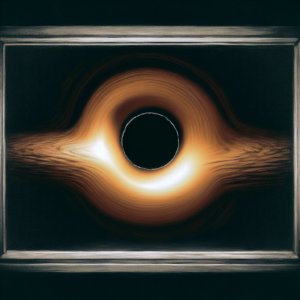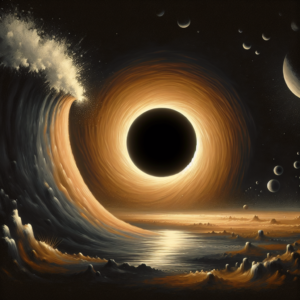
Beyond the Event Horizon: Unveiling the Power of Black Holes
Introduction to Black Holes: A Journey into the Unknown
Black holes have long captivated the imagination of scientists and the general public alike. These enigmatic cosmic entities, with their immense gravitational pull, have the power to bend space and time, and even trap light itself. But what exactly is a black hole? To understand this, we must delve into the realm of astrophysics and explore the fascinating world of these celestial phenomena.
At its core, a black hole is a region in space where gravity is so strong that nothing, not even light, can escape its grasp. This occurs when a massive star collapses under its own weight, creating a singularity – a point of infinite density – surrounded by an event horizon. The event horizon is the boundary beyond which nothing can escape the black hole’s gravitational pull, making it the point of no return.
The Event Horizon: The Point of No Return

Black hole
The event horizon is a defining feature of black holes, marking the boundary between the observable universe and the unknown. Once an object crosses this threshold, it is forever trapped within the black hole’s gravitational grip. This concept was first introduced by physicist John Michell in 1783 and later refined by Albert Einstein’s theory of general relativity.
To visualize the event horizon, imagine a massive star collapsing into a black hole. As the star’s mass becomes concentrated in a singularity, the surrounding space-time curves, creating a gravitational well. The event horizon is the point at which the curvature becomes so extreme that even light cannot escape. It is as if the black hole has created a cosmic prison, forever trapping anything that ventures too close.
Unveiling the Secrets: Exploring the Inner Workings of Black Holes

Black hole
While the event horizon marks the boundary of a black hole, it is what lies within that truly intrigues scientists. The singularity at the center of a black hole is a point of infinite density, where the laws of physics as we know them break down. To understand the inner workings of black holes, scientists turn to theoretical physics and mathematical models.
One of the most prominent theories is Stephen Hawking’s concept of Hawking radiation. According to this theory, black holes are not entirely black, but emit a faint radiation due to quantum effects near the event horizon. This radiation, known as Hawking radiation, is a result of virtual particle-antiparticle pairs being created near the event horizon, with one particle falling into the black hole and the other escaping into space.
The Power of Gravity: Understanding the Phenomenon of Spaghettification
One of the most mind-boggling consequences of a black hole’s immense gravitational pull is the phenomenon known as spaghettification. As an object approaches a black hole, the difference in gravitational force between its head and feet becomes so extreme that it stretches the object into a long, thin shape resembling spaghetti. This effect occurs because the gravitational force at the object’s feet is stronger than at its head, causing it to be stretched and torn apart.
The concept of spaghettification was first proposed by physicist Sir Martin Rees in 1964 and has since been confirmed through observations of objects falling into black holes. This phenomenon highlights the extreme nature of black holes and the power of gravity within their vicinity.
Beyond the Event Horizon: What Lies Inside a Black Hole?

Black hole and singularity
While the inner workings of black holes remain largely a mystery, scientists have proposed several theories about what lies beyond the event horizon. One possibility is that black holes may contain a wormhole, a hypothetical tunnel connecting distant parts of the universe. Wormholes, if they exist, could potentially serve as shortcuts through space-time, allowing for interstellar travel and the exploration of distant galaxies.
Another theory suggests that black holes may lead to the formation of a new universe. According to this idea, the singularity at the center of a black hole could trigger a “big bounce,” causing the universe to collapse and then expand again in a new cycle of creation. This concept, known as the Big Bounce theory, challenges the notion of a singular Big Bang origin and opens up new possibilities for understanding the nature of our universe.
The Future of Black Hole Research: Unraveling the Mysteries of the Universe
As our understanding of black holes continues to evolve, so does our ability to study them. Advancements in technology, such as the Event Horizon Telescope, have allowed scientists to capture the first-ever image of a black hole’s event horizon in 2019. This groundbreaking achievement has opened up new avenues for research and sparked a renewed interest in unraveling the mysteries of these cosmic phenomena.

Black hole
Future research aims to explore the behavior of matter and energy within black holes, as well as the potential for extracting energy from them. Scientists also hope to gain a deeper understanding of the role black holes play in the formation and evolution of galaxies, as well as their impact on the fabric of space-time.
In conclusion, black holes are fascinating cosmic entities that continue to captivate our imagination and push the boundaries of our understanding of the universe. From the event horizon to the inner workings and beyond, the study of black holes offers a glimpse into the unknown and holds the key to unraveling the mysteries of the cosmos. As we continue to explore and research these enigmatic phenomena, we inch closer to unlocking the secrets they hold and expanding our knowledge of the universe we call home.
